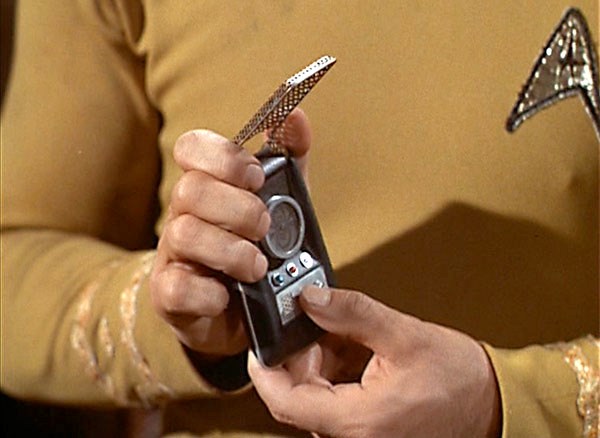I used to hide the fact that I was a geek.
It’s not like I wore a stained trenchcoat over Spiderman pajamas when I frequented seedy comic book stores or anything.
However, when my buddies talked about car engines or rad new sports gear, I wouldn’t exactly chime in with descriptions of my new collector’s edition first-appearance Batman action figure (it’s not a “doll”) or Neil Gaiman graphic novel I was reading. The same thing went for my love of sci-fi, video games and technology.
But now that pretty much every movie and TV show is seemingly being made for comic book fanboys, and cutting-edge technology is a mainstream obsession, I can let my freaky geek flag fly proudly.
I mean, let’s face it: most cool technology today was already predicted by science fiction long ago anyway.
Star Trek fans are the stereotypical geek archetype, and make fun of it all you like, but Capt. Kirk and his intrepid crew were using the equivalent of iPhones and iPads whenever they’d whip out their trusty communicators or data tablets.
That was pretty far out way back in the 1960s, but today such concepts are so mundane that we get angry when the technology that instantly connects us with almost everything and every place in the world takes that few extra seconds to download a funny picture of a cat.
More recently, Microsoft just showed off its own version of Star Trek’s “Universal Translator,” which allowed Capt. Kirk to speak to, and eventually woo the pants off, a galaxy of female aliens who always looked remarkably like regular Earth women painted green. Last month in California, Microsoft execs gave a demonstration of Skype Translator (for use with the Skype online chat program), which allows a conversation to happen in real time between two people who do not speak the same language. During the demonstration, one English-speaking person in California was conversing with a German-speaking person in London, with each person’s voice translated into the receiver’s preferred language.
While there was no mention of whether the tech could be helpful in wooing the garments off fake alien women, you can just imagine how this type of breakthrough will smash language barriers, not only for Skype’s 300 million users worldwide, but for everyone around the globe. Once the tech is perfected, launched (sometime in the next year, apparently) and becomes integrated with mobile platforms, everyone everywhere is basically speaking the same language.
Meanwhile, a group of Dutch scientists and engineers is trying to get us face-to-face with all those people by unlocking the secrets to teleportation.
Can you say, “Beam me up, Scotty?”
A story in the Irish Times recently reported Delft University conducted a demonstration in which information encoded into sub-atomic particles was teleported between two points with 100 per cent accuracy for the very first time.
Sure, the research is really going toward making super-fast quantum computers, and I’ll admit teleporting something smaller than an atom 10 feet is a far cry from “beaming” over to the planet of Painted Promiscuous Cheerleaders.
But the head brainiac of the project said that if a particle can be teleported, there’s no reason to believe the same cannot be done for a human being — given we are nothing more than a collection of atoms strung together in a particular way.
So, while at one time I guarded my geeky secret identity because I thought people would think I was a less-than-mature or weird guy (which, to be honest, isn’t all that far off), I now see my kind as visionaries of future technology.
I still don’t talk about my action figures (they are NOT dolls!), though.



